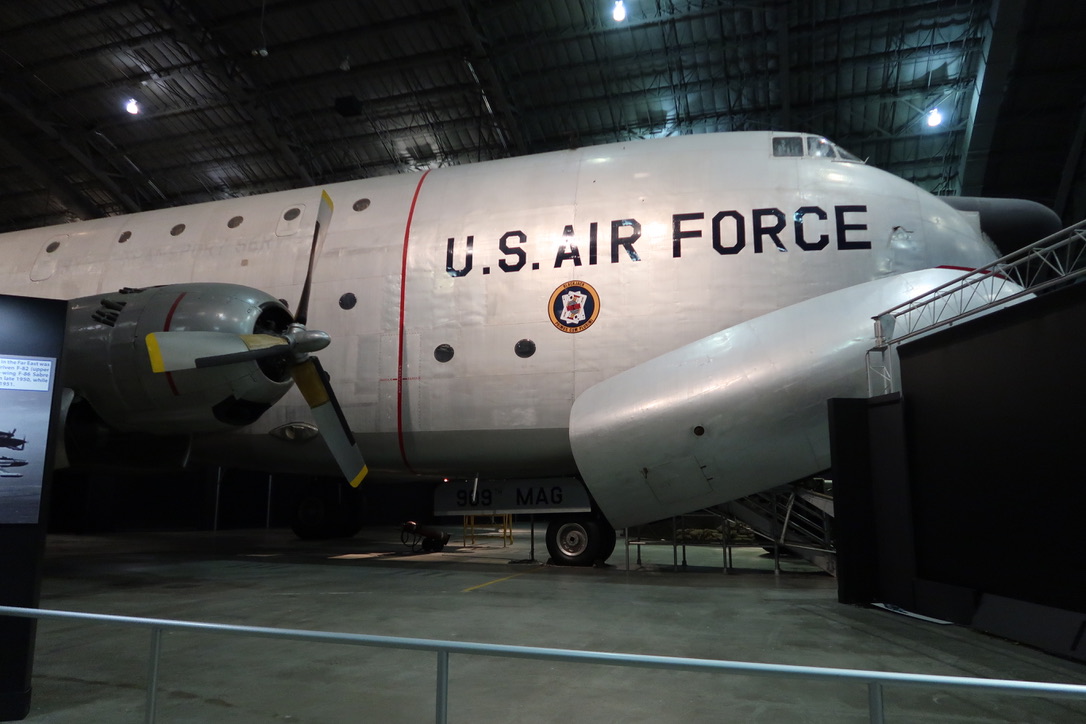
Spend a Day at the National Museum of the United States Air Force
The second stop on our quest to visit 7 science centers in 4 days is not actually a science center. The National Museum of the United States Air Force is not part of the ASTC passport program. But it’s a museum that we’ve been wanting to visit, it’s FREE, and it was only a few minutes away from the Boonshoft Museum of Discovery. So we made time to squeeze it in. We are considering it a bonus museum for this trip, or museum #8.
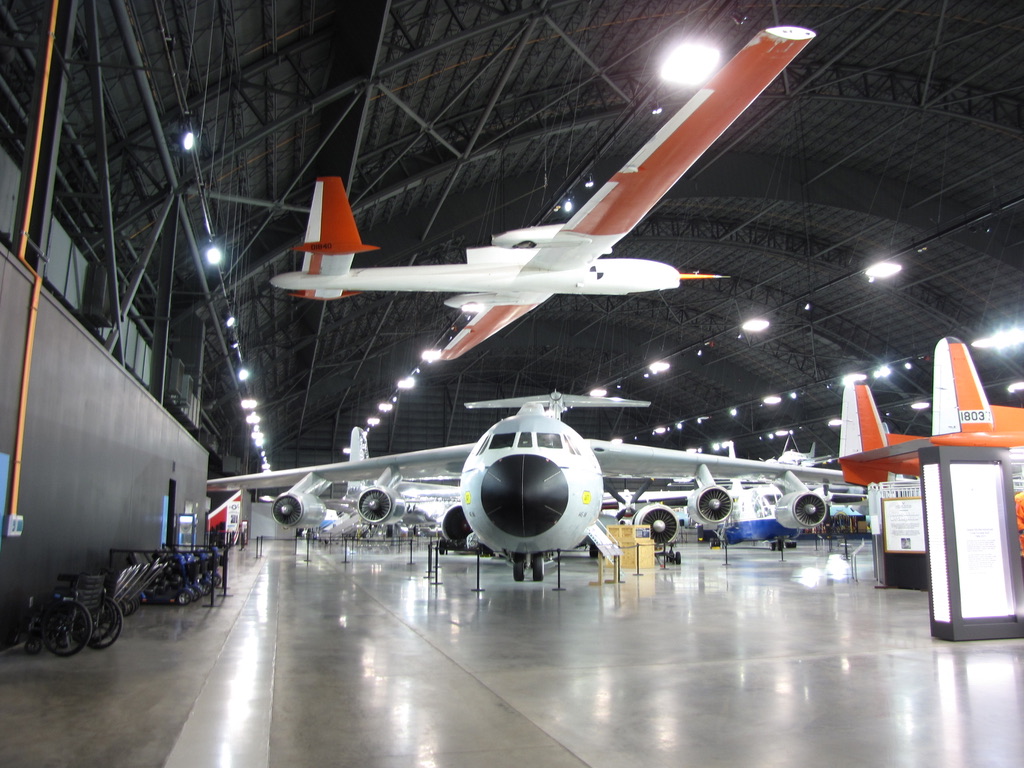
The National Museum of the United States Air Force is located just a few miles down the road from the Wright-Patterson Air Force Base in Dayton, Ohio. Rob went to college in Dayton but had never visited the Air Force Museum, so we were all excited to go. We got there 2 1/2 hours before they closed and knew we wouldn’t have enough time to see everything.
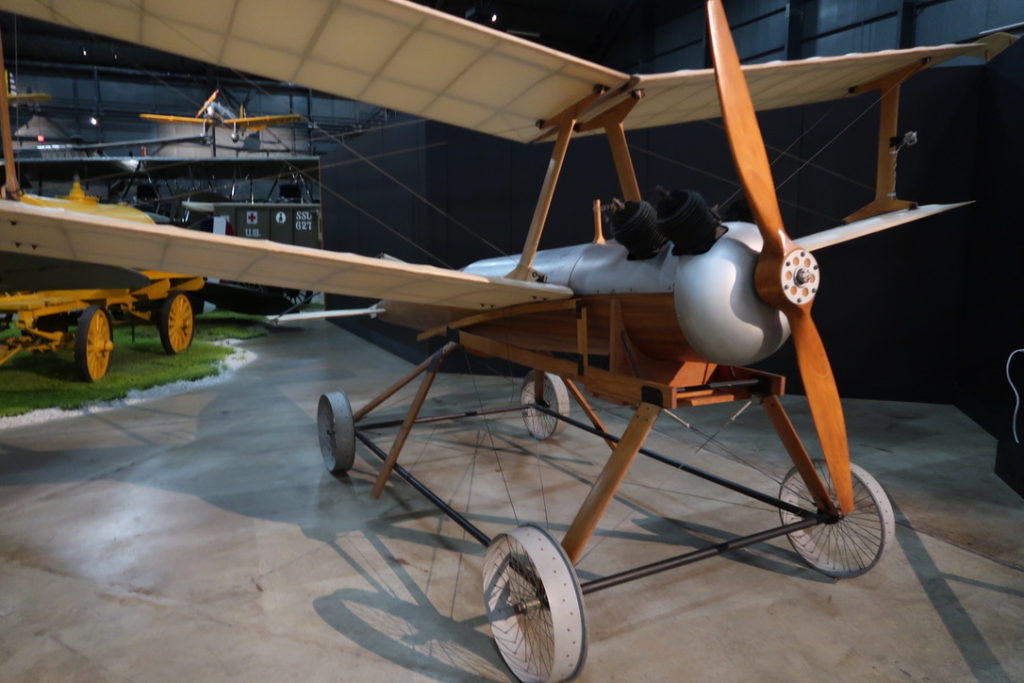
There are 4 different buildings of exhibits. You could easily spend a whole day or two here. There are guided tours of each building offered at different times throughout the day, but we wanted to explore on our own so we could see as much as we could in the time we had. Grab a map when you arrive so that you can see what the schedule is.
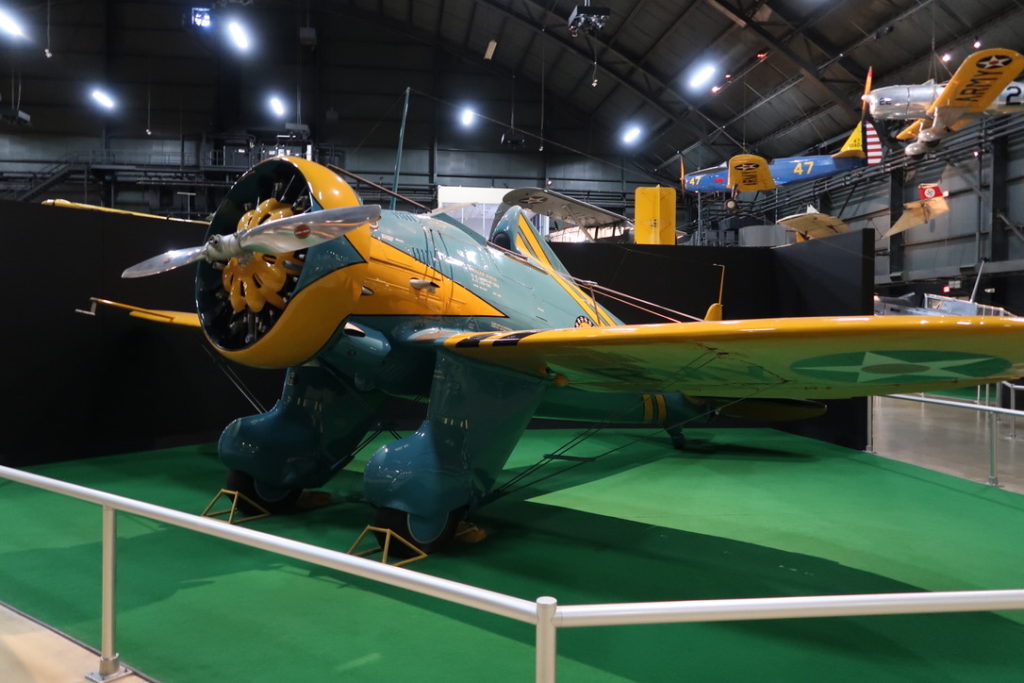
Our kids wanted to know where the interactive exhibits were, so that’s the first thing we looked up on our map. There are 2 walk through aircrafts in building 2 and there are 7 walk through aircrafts in building 4. In the Cold War section of building 3 there are 5 cockpits that you can sit in. The kids really enjoyed the sit-in cockpits because they could pretend they were the pilots flying the aircraft.
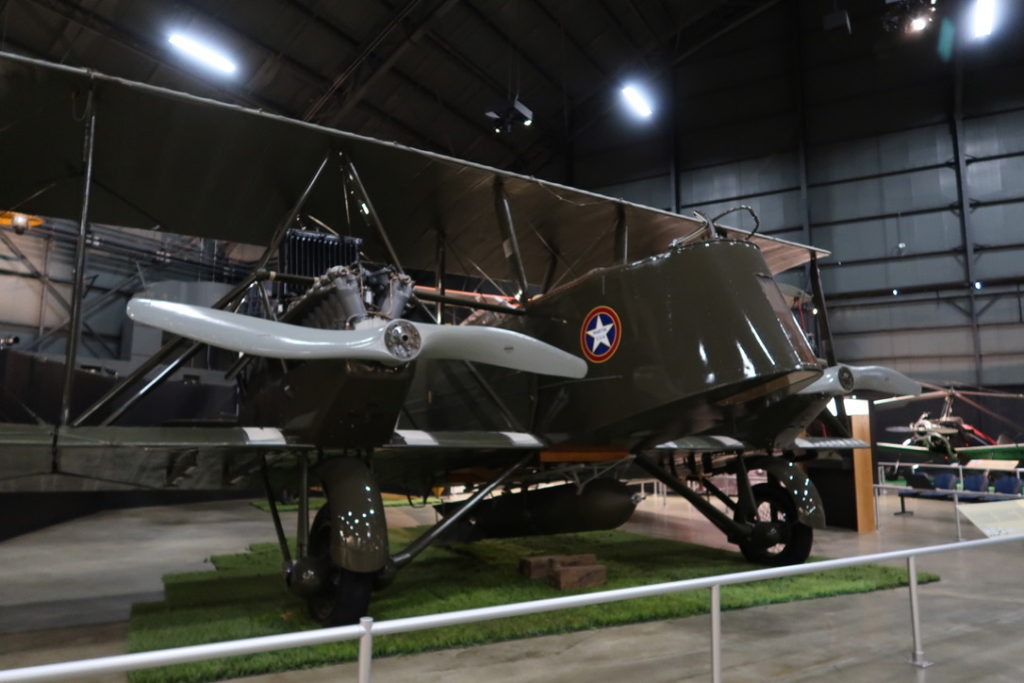
There were a few flight simulators and virtual adventures that you could pay to do, as well as a theater where you can watch 3D films, but since we were pressed for time we opted not to do those.
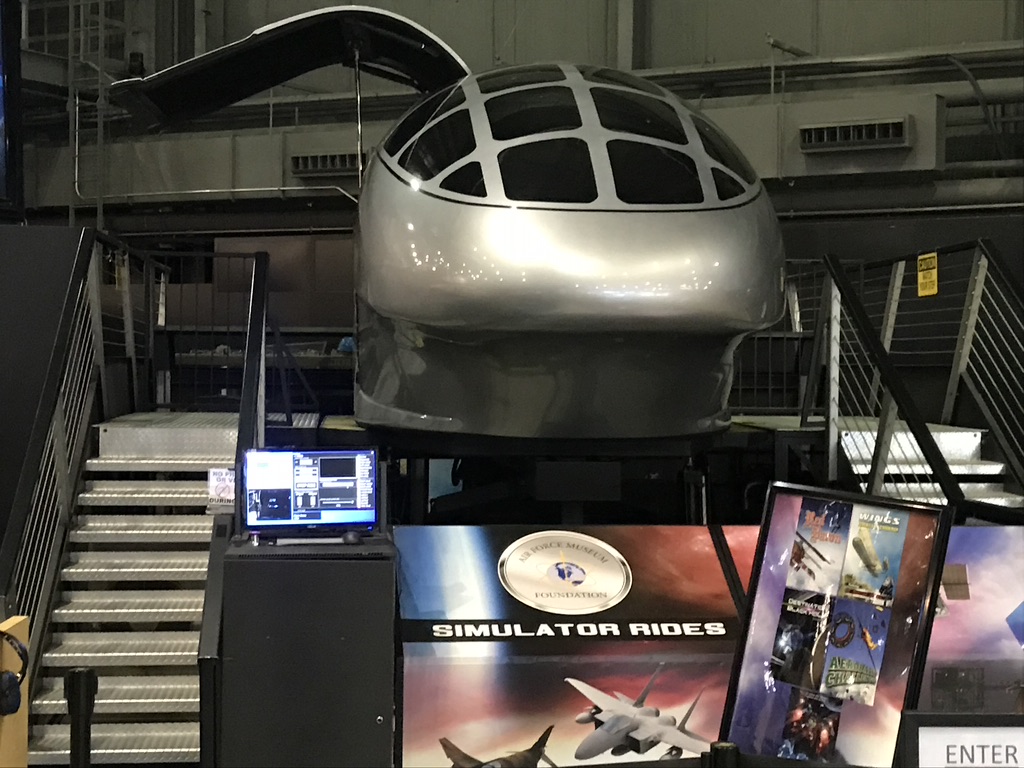
The first building consists of aircraft from the Early Years, World War I, and World War II. The Early Years exhibit shows the history and origins of military aircraft.
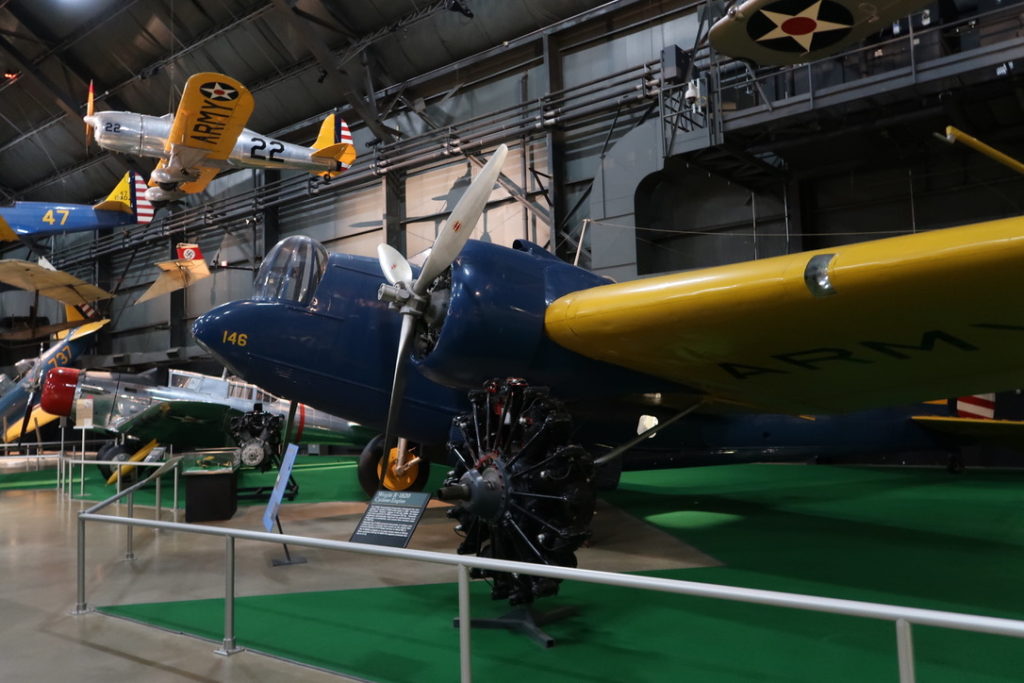
The museum goes as far back as the hot air balloon. In 1783 Joseph and Etienne Montgolfier put on a hot air balloon demonstration for King Louis XVI and Marie Antoinette. The passengers on this hot air balloon were a sheep, a duck, and a chicken. The flight was successful and proved that it was safe to travel up in the sky and still be able to breathe. We love to read about places before we visit, and we read a great children’s book about this – Hot Air: The (Mostly) True Story of the First Hot-Air Balloon Ride.
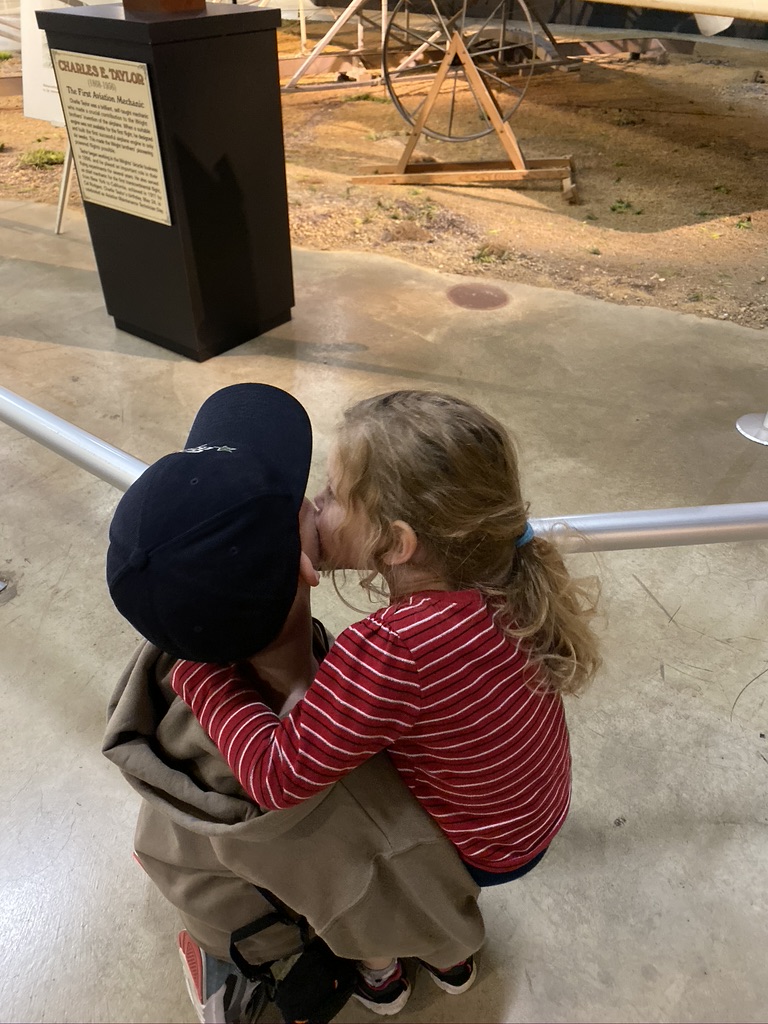
In building 1 you will find exhibits about the Wright brothers and World War I. The Caquot Type R Observation Balloon was a tethered balloon that would lift 2 men in a basket 1,000-4,000 feet in the air. From there they would be able to see as far as 40 miles in order to detect enemy movement. You can see the Caquot Type R Observation Balloon in the top right corner of the photo below.
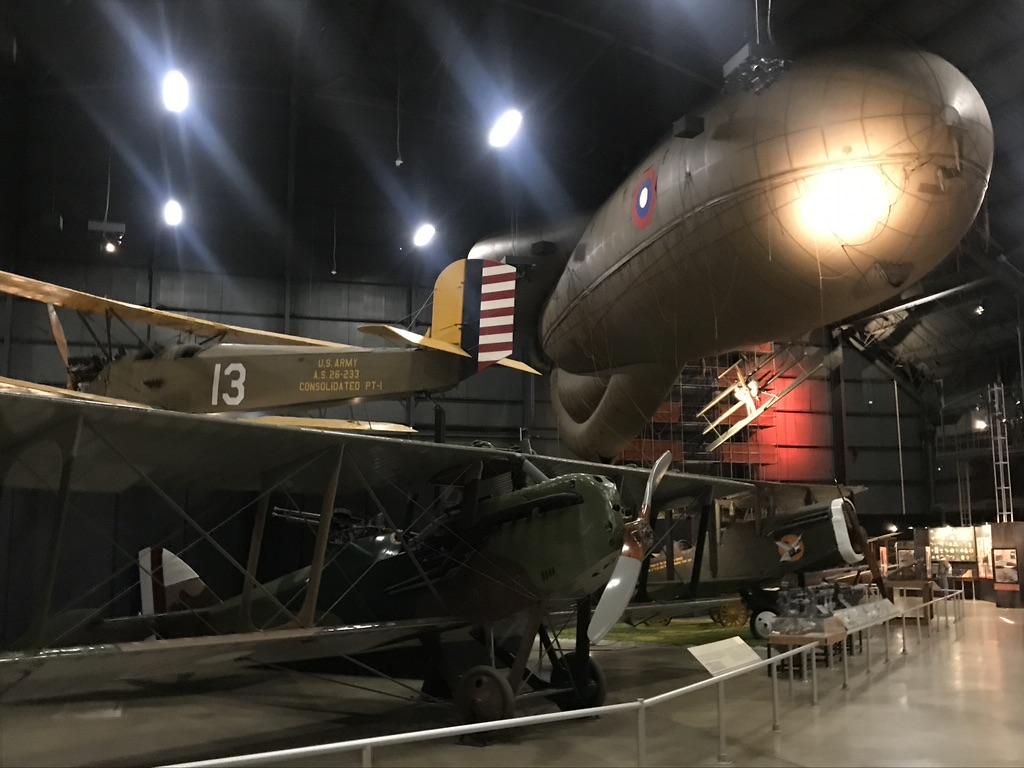
You can see the back half of the Caquot Type R Observation Balloon in the top right hand corner of the photo below.

During World War I, an Italian named Gianni Caproni devised several multi-engine heavy bombers. The Caproni bombers were produced not only in Italy, but also in France, Great Britain and the United States. The Caproni Ca. 36 is pictured below.
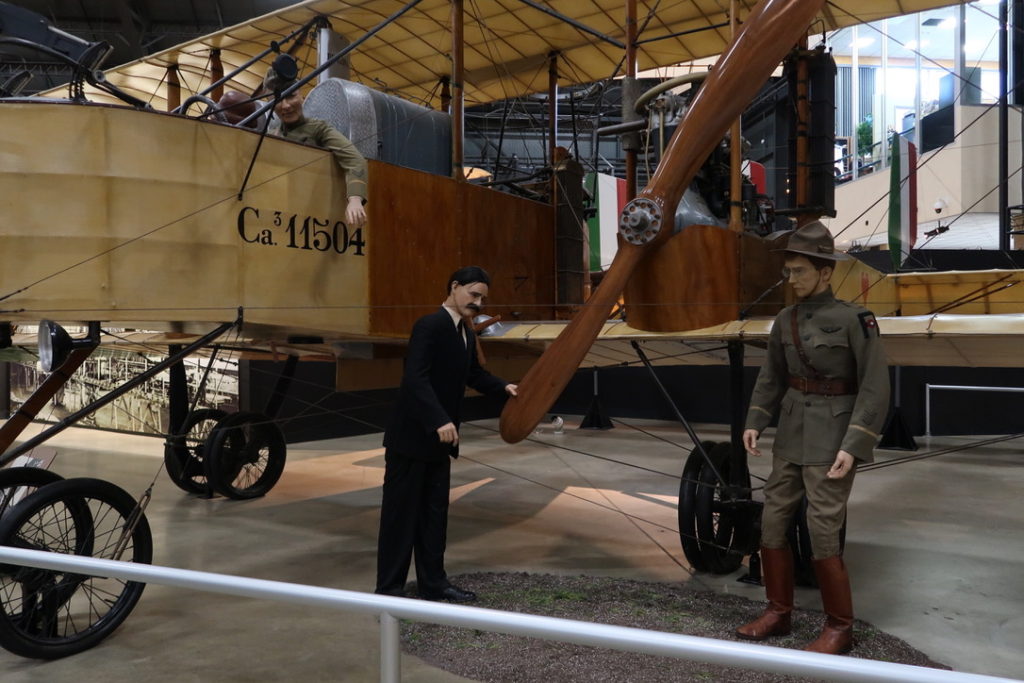
The Wright 1916 Wind Tunnel was designed by Orville Wright. He kept it in his laboratory which was in Dayton, Ohio. The tunnel was used to conduct aerodynamic experiments during World War I and is documented to have reached a wind velocity of over 160 miles per hour. You can see the Wright 1916 Wind Tunnel in our YouTube video.
The McCook Field Wind Tunnel (pictured below) was built in 1918. It uses a 24-blade fan of 60 inches diameter to create a maximum air speed of 453 miles per hour at the test area. It was used for calibrating airspeed instruments.
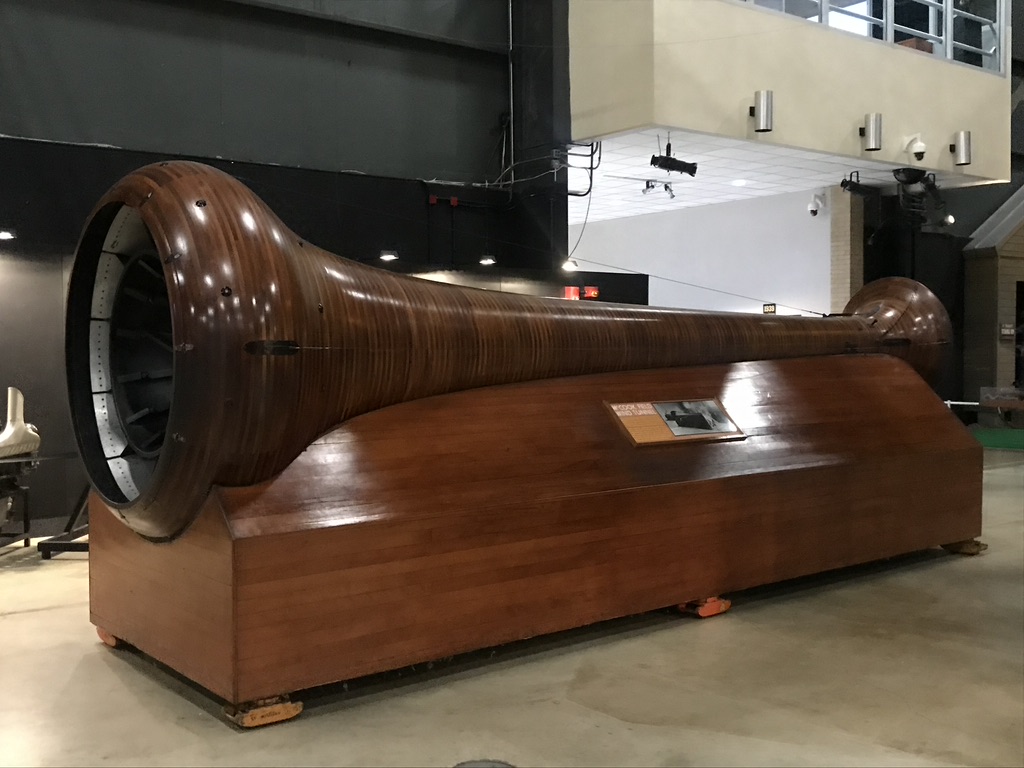
There’s a rare concentration camp uniform on display as you exit the World War I area and head into the World War II area. It was given by Jack Bomstein, whose father Moritz, wore the uniform while he was imprisoned at Buchenwald.
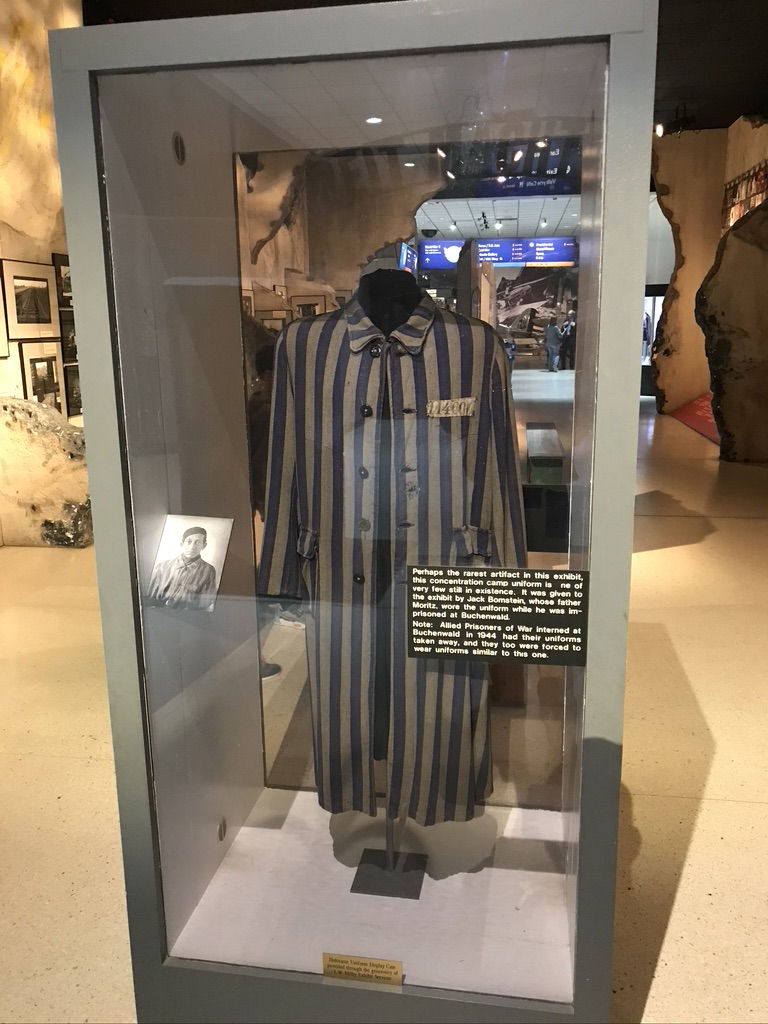
During our visit there was a really neat temporary exhibit honoring canine warriors. The exhibit was made up of a series of wooden sculptures made by artist James Mellick. It’s a traveling exhibit, so maybe you will be able to catch it on display somewhere.
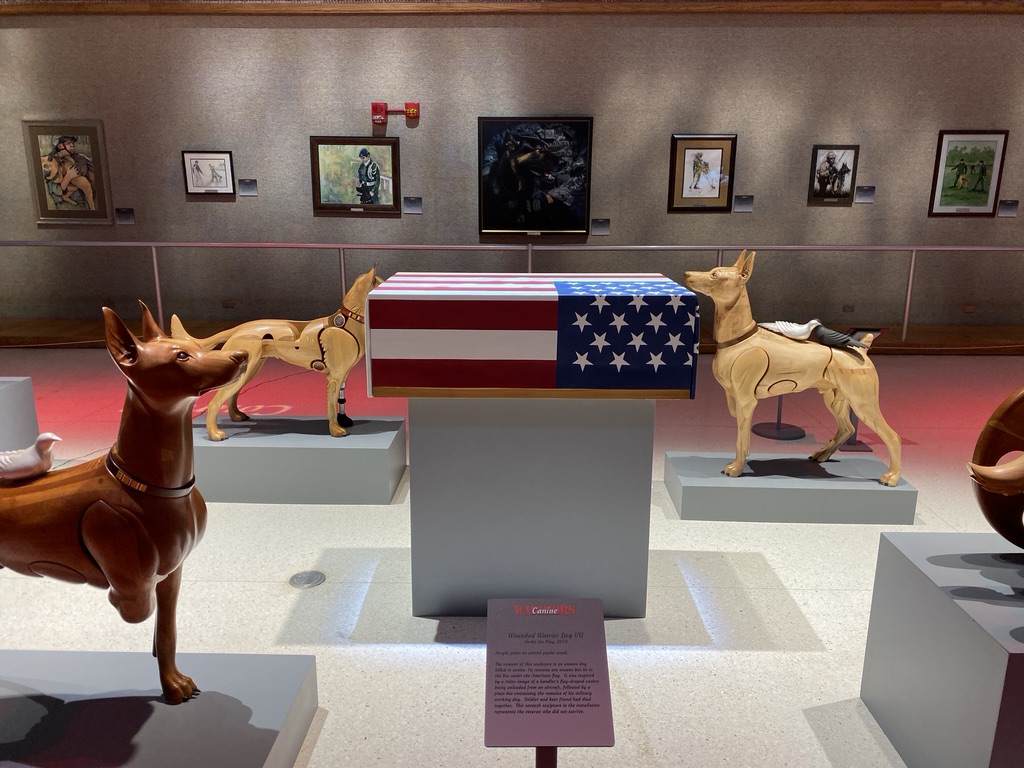
On your way to the second building you can stop and see the National Aviation Hall of Fame, which is a separate room off to the side. In building two you will find aircraft from the Korean War and the Southeast Asia (Vietnam) War. Here we found the first two aircraft that we could walk through. We walked through the Douglas C-124 Globemaster II (shown below) which was nice and roomy inside.
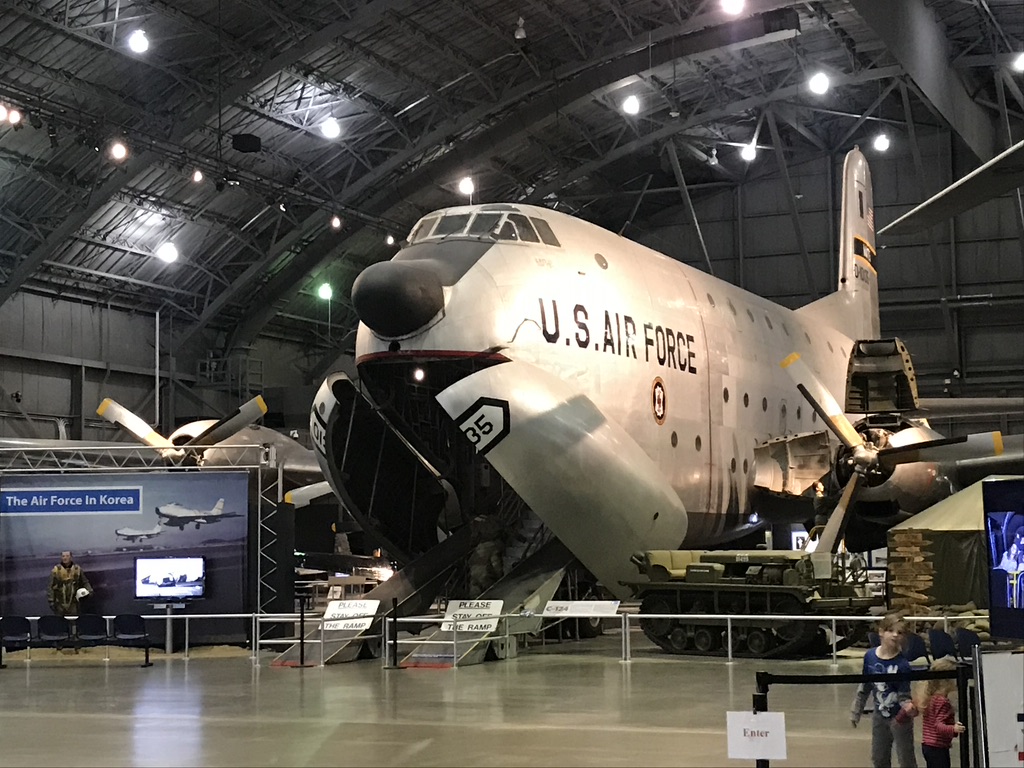
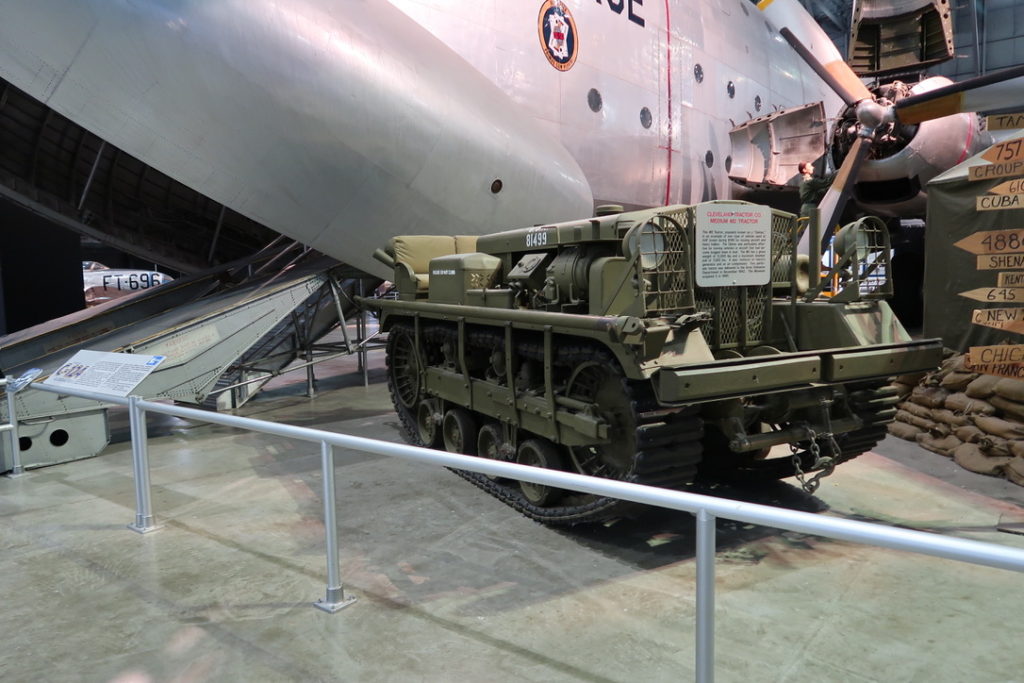
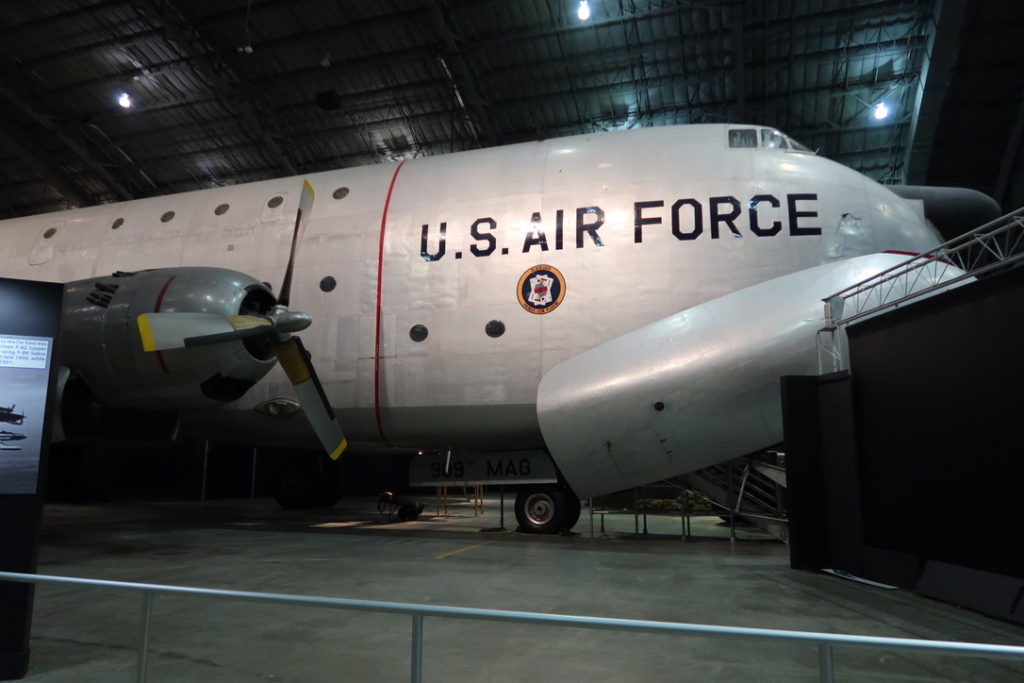
Rob and the kids walked through the B-29 fuselage, but it was too narrow for me with my claustrophobia. Cullan liked that the B-29 fuselage had a painting of Dopey and Doc on the side. You can see how long the Crew Tunnel inside the B-29 fuselage is. If you look closely you can see Cullan’s head at the end of the Crew Tunnel.
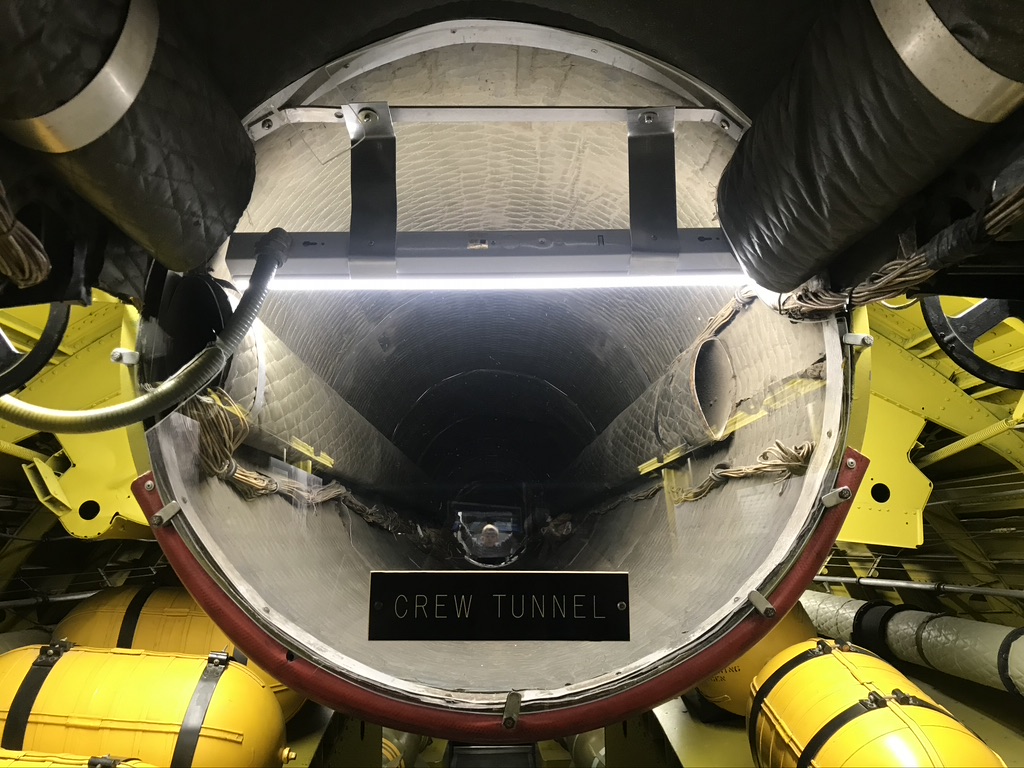
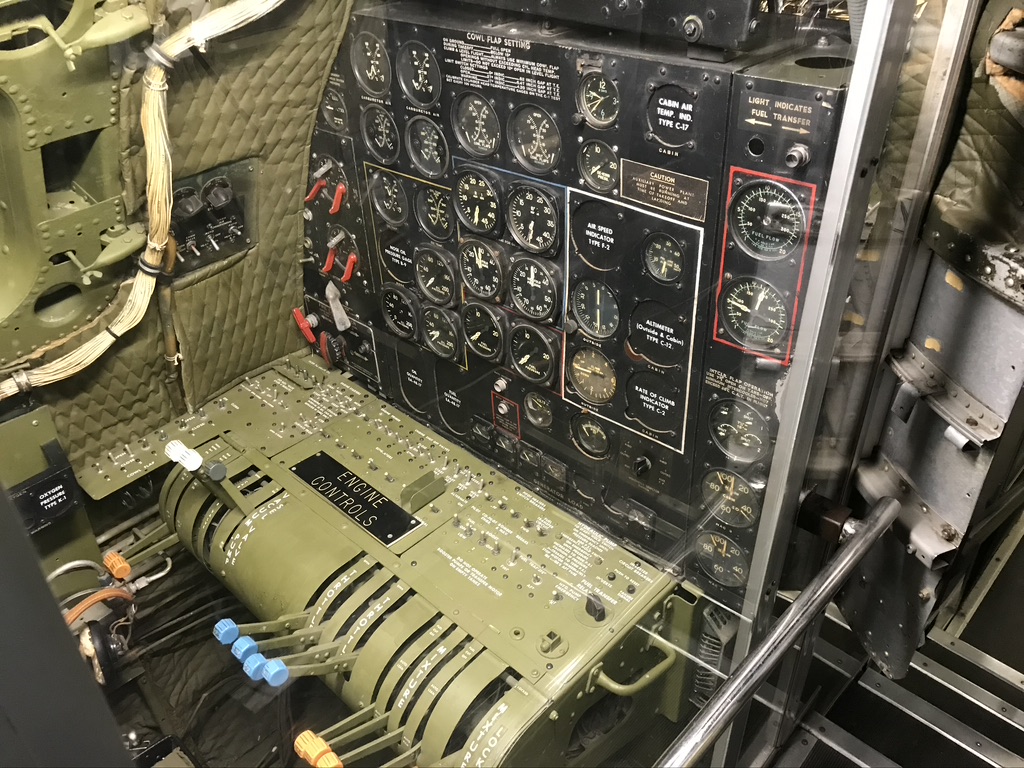
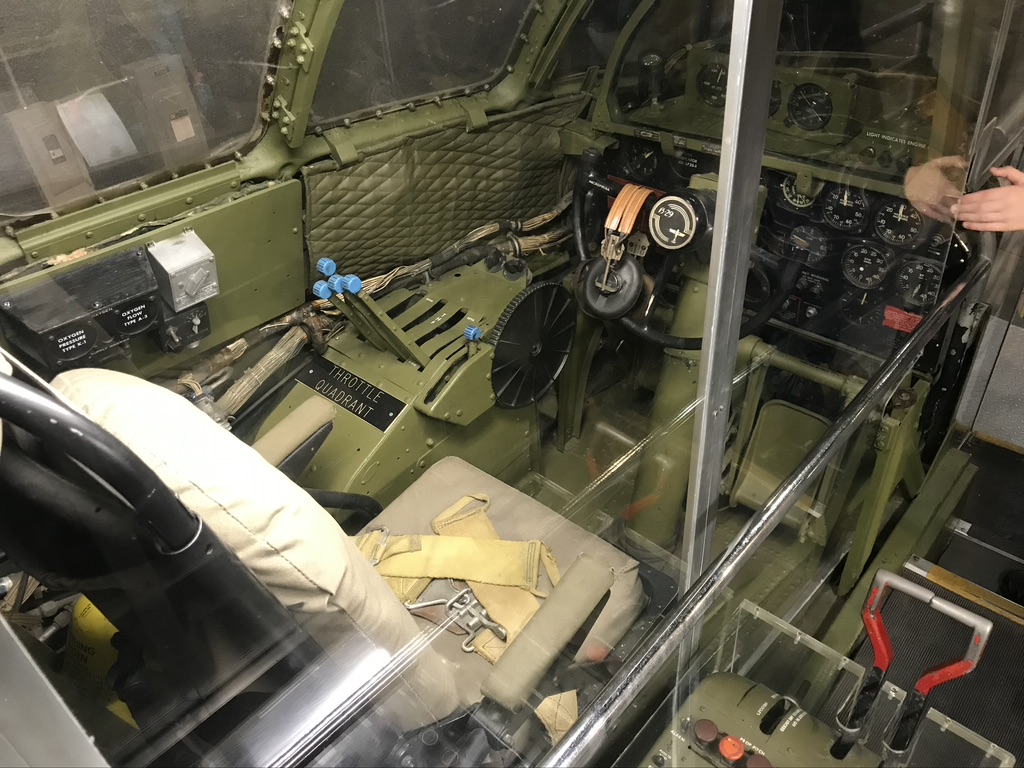
Building three contains aircraft from the Cold War and 5 sit-in cockpits. The sit-in cockpits were definitely one of the highlights of the trip. Micah and Cullan probably could’ve spent all day in this part of the museum letting their imaginations run wild.

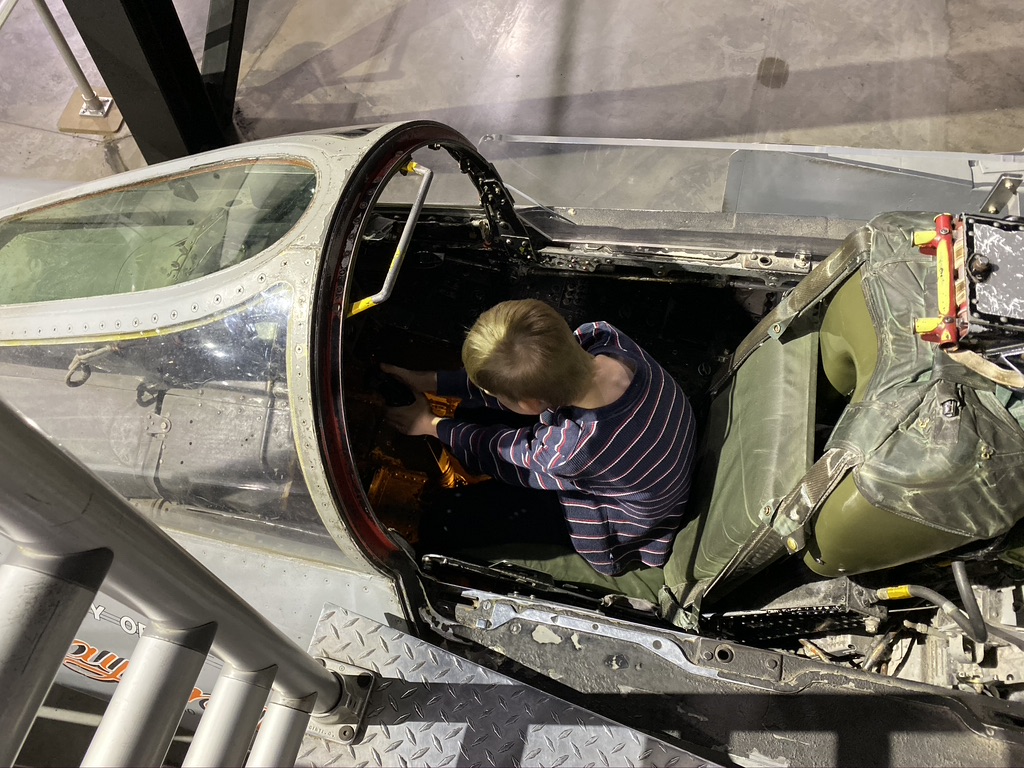
The Northrop F-89 (pictured below) was an aircraft that could locate, intercept, and destroy enemy aircraft by day or night in many types of weather conditions.
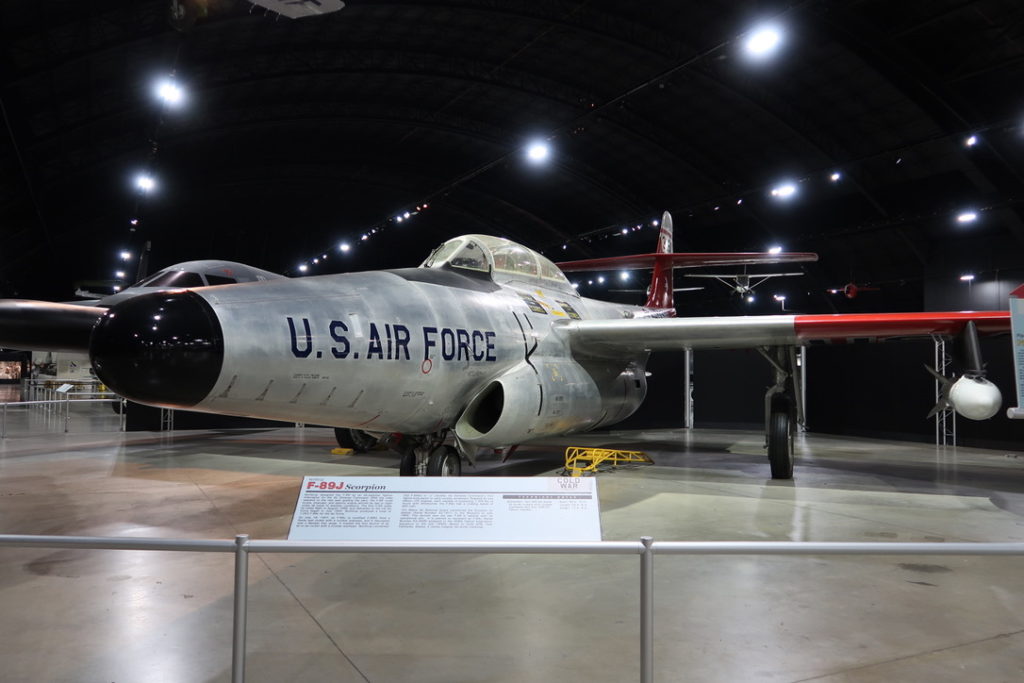
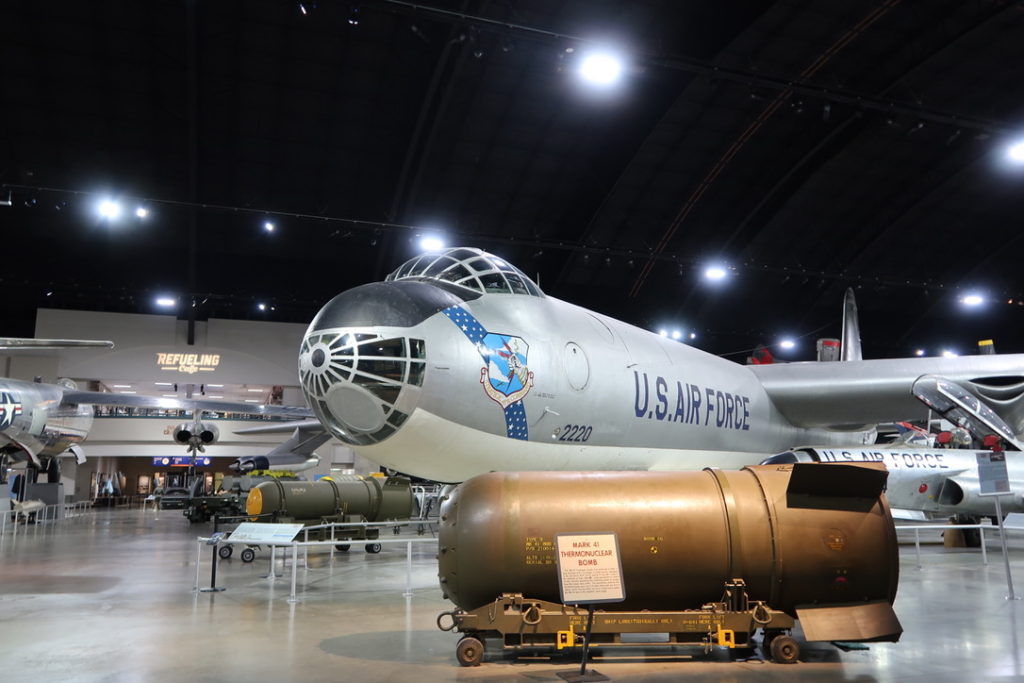
In between buildings three and four you walk through a large silo that contains the Missile Gallery. The Missile Gallery contains United States Air Force missiles that helped keep the peace between the Cold War superpowers. We were amazed at how tall the missiles were. Look for Micah in the picture below for reference as to how tall they are.
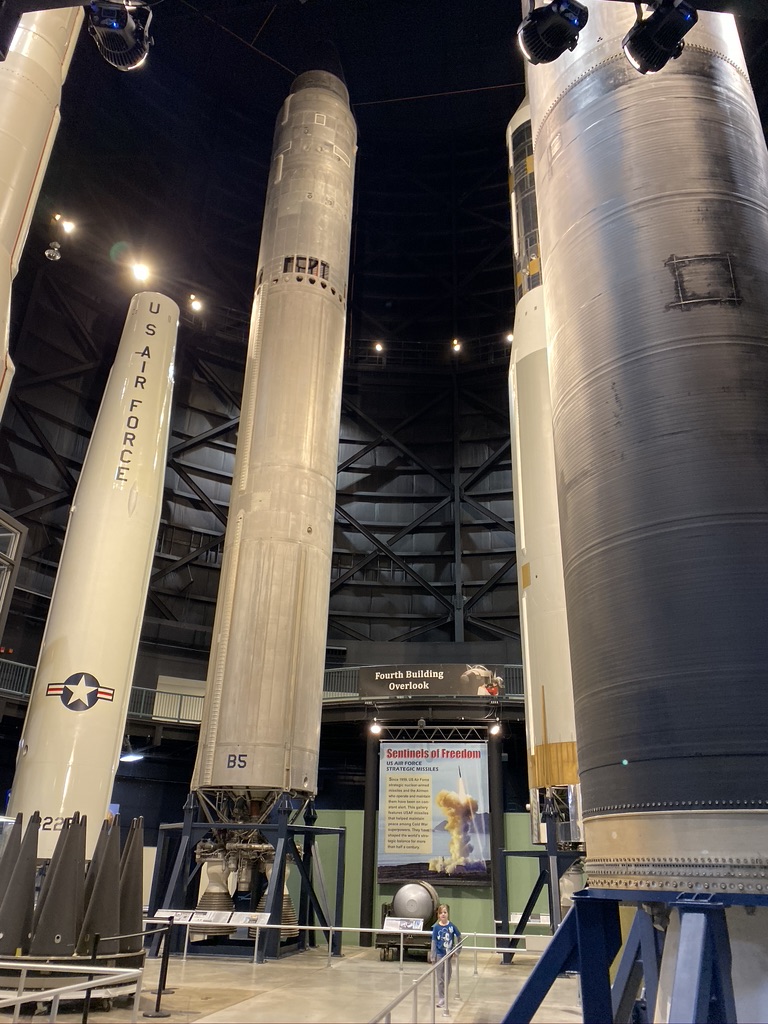
The last area, building four, contains Presidential Aircraft, Global Reach, Space, and Research and Development. We enjoyed walking around NASA’s first Crew Compartment Trainer. You can walk around and see the cockpit and mid-deck areas. The cockpit was actually very small. There were simulators where the kids could pretend they were in the cockpit operating it. The simulators were made to be the same size as the cockpit so you could experience what it would really feel like to be in there. The mid-deck is where astronauts trained to carry out space experiments, eat and sleep, and take care of hygiene needs. There was even a space bathroom on display. During launch and re-entry the astronauts would ride in removable seats in the mid-deck.
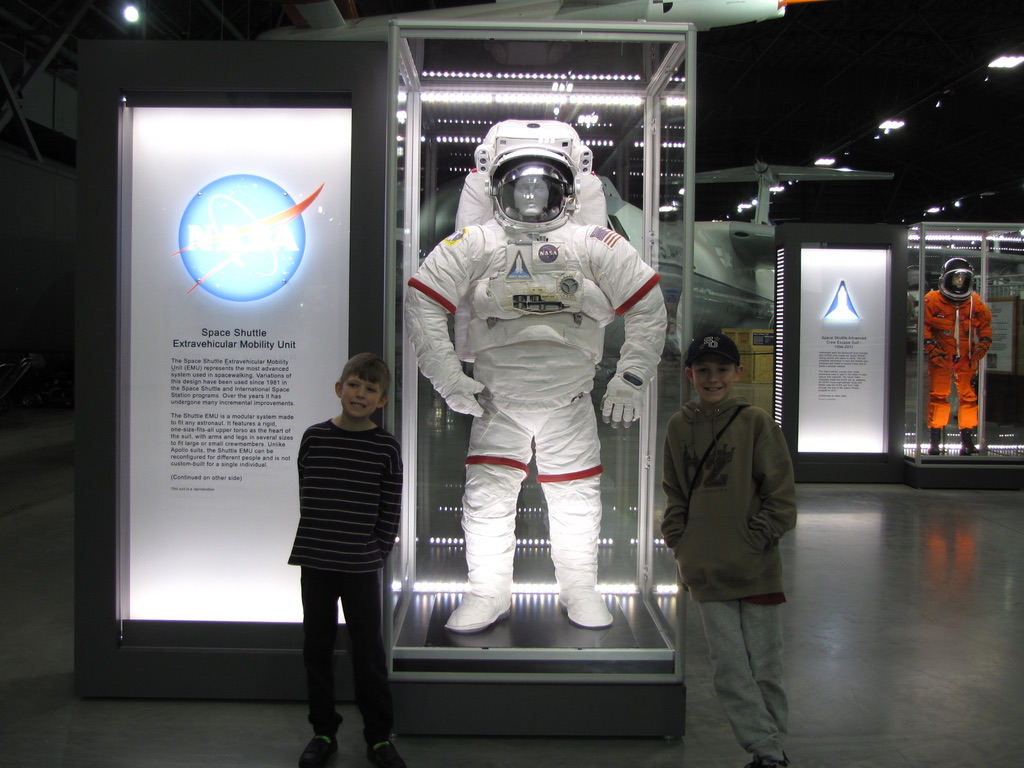
There were several different presidential aircraft, and we were excited that some of them were set up for you to be able to walk through. One of them was the Air Force One plane that was used for 8 presidents – Kennedy, Johnson, Nixon, Ford, Carter, Reagan, George H.W. Bush and Clinton. At the end of the aircraft, as you are exiting, there is a sign that says, “The flight crew of SAM 26000 made room for President Kennedy’s casket by removing this partition and the first four seats.” President Lyndon B. Johnson was also sworn in as President on this plane. It was very sobering to think about all of the history contained within the walls of this plane.
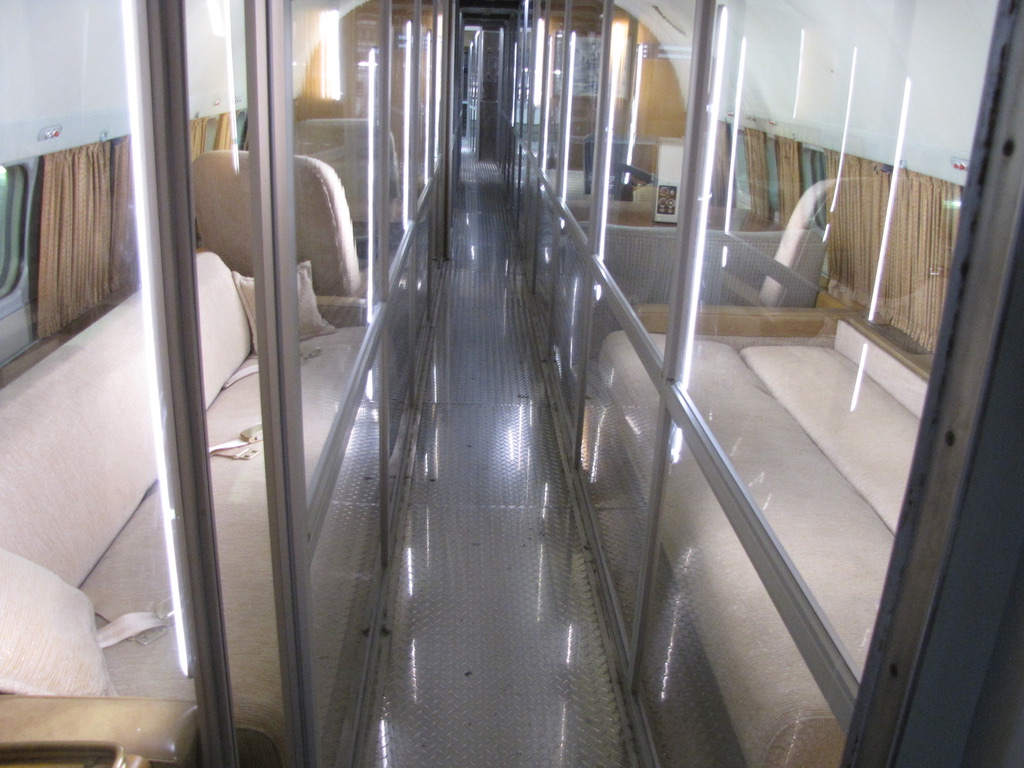
Another presidential airplane that we were able to walk through was Columbine III, which was President Dwight D. Eisenhower’s plane. It was named after the state flower of Colorado and in honor of his wife Mamie.

It was also interesting to see that on President Franklin D. Roosevelt’s plane they had to provide a larger bathroom to accommodate his wheelchair.
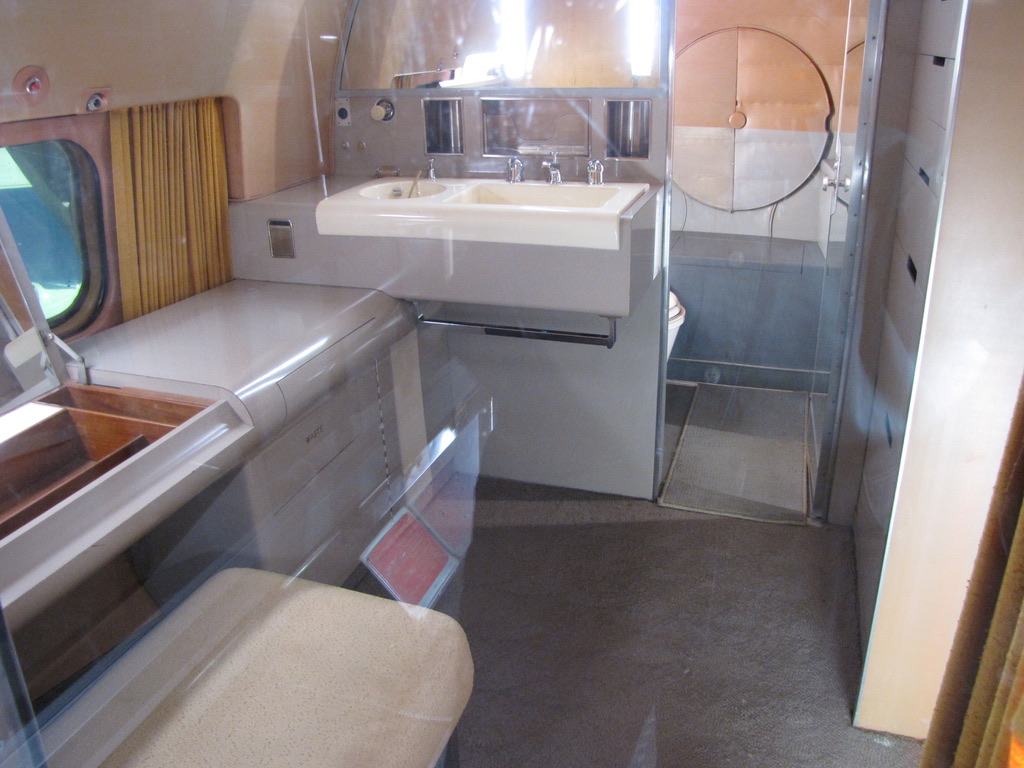
By the time we made it to the fourth building we were having to rush around a bit because it was getting close to closing time. We were one of the last ones to leave the museum that day and it was a loooong walk back to the front of the museum where the exit is. The kids were disappointed that the gift shop was closed by the time we made our way up to the front of the museum. I guess that means we’ll have to plan another trip back sometime.
For another look at our trip to the National Museum of the United States Air Force, check out our YouTube video below.
You can also go back and read about the first stop on our quest to visit 7 science centers in 4 days, which was the Boonshoft Museum of Discovery.
Pin for later
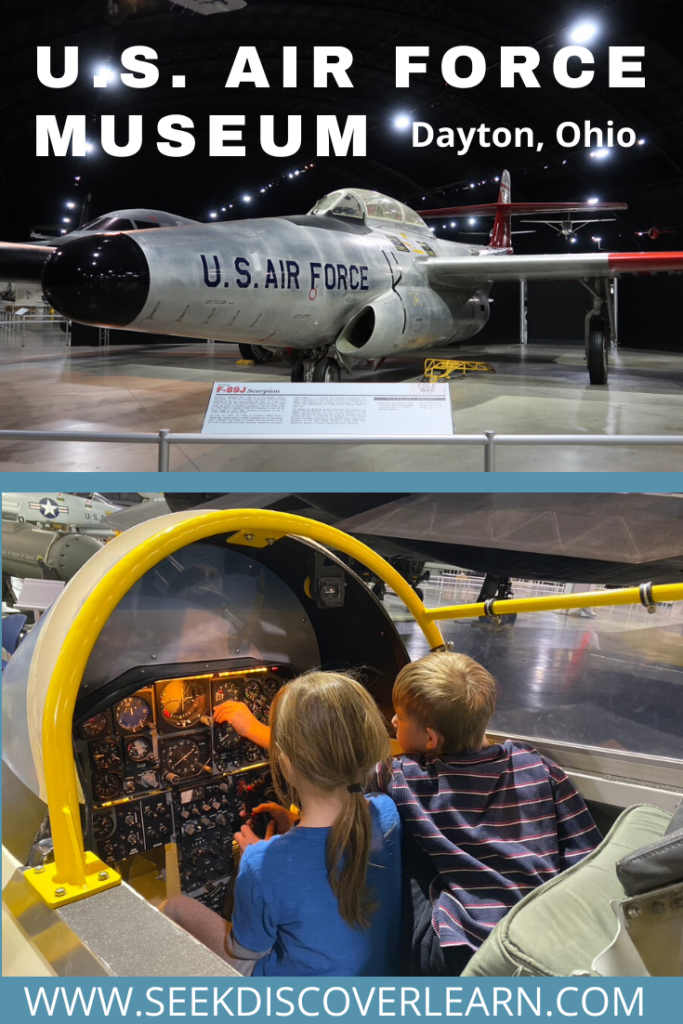

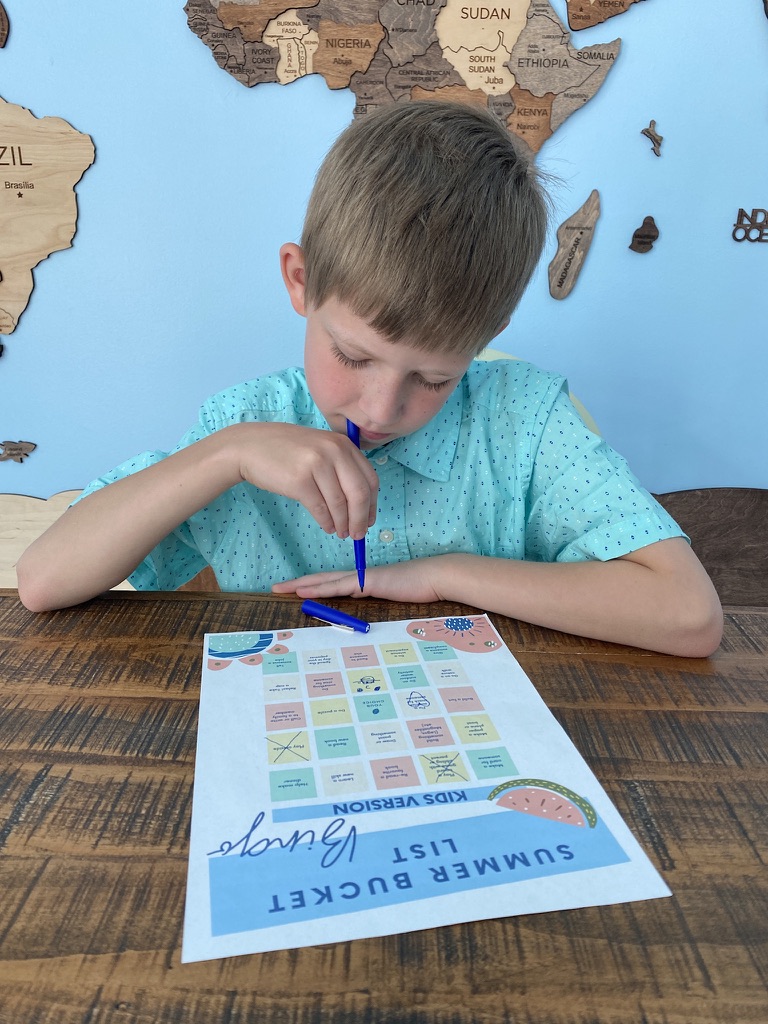
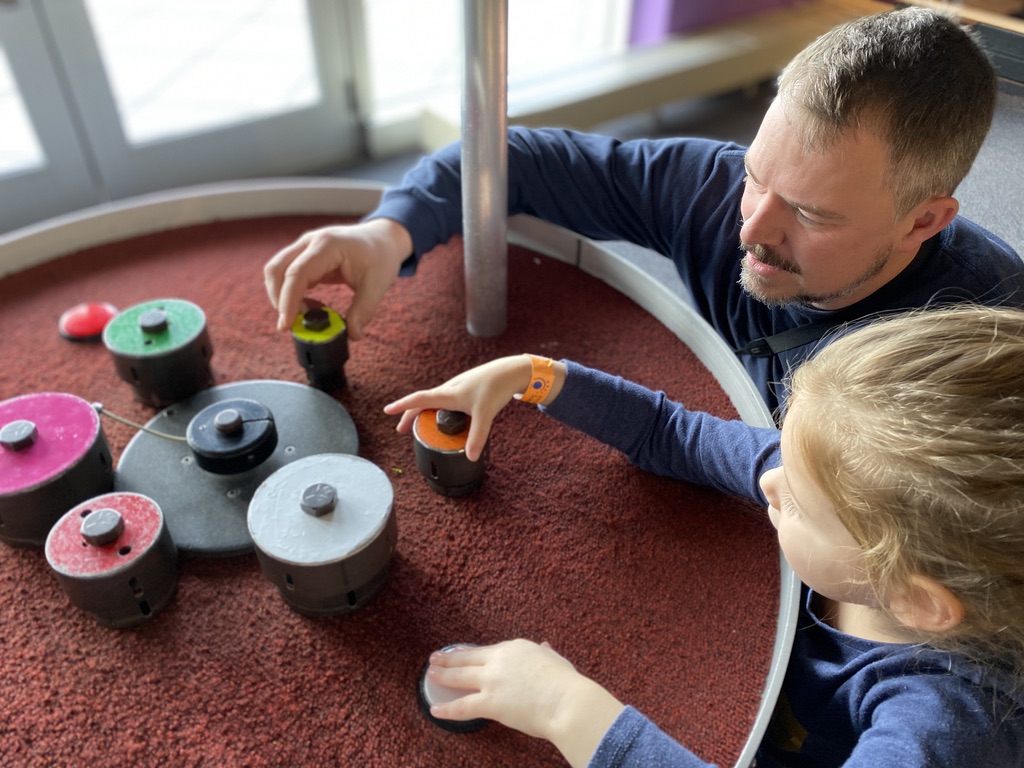
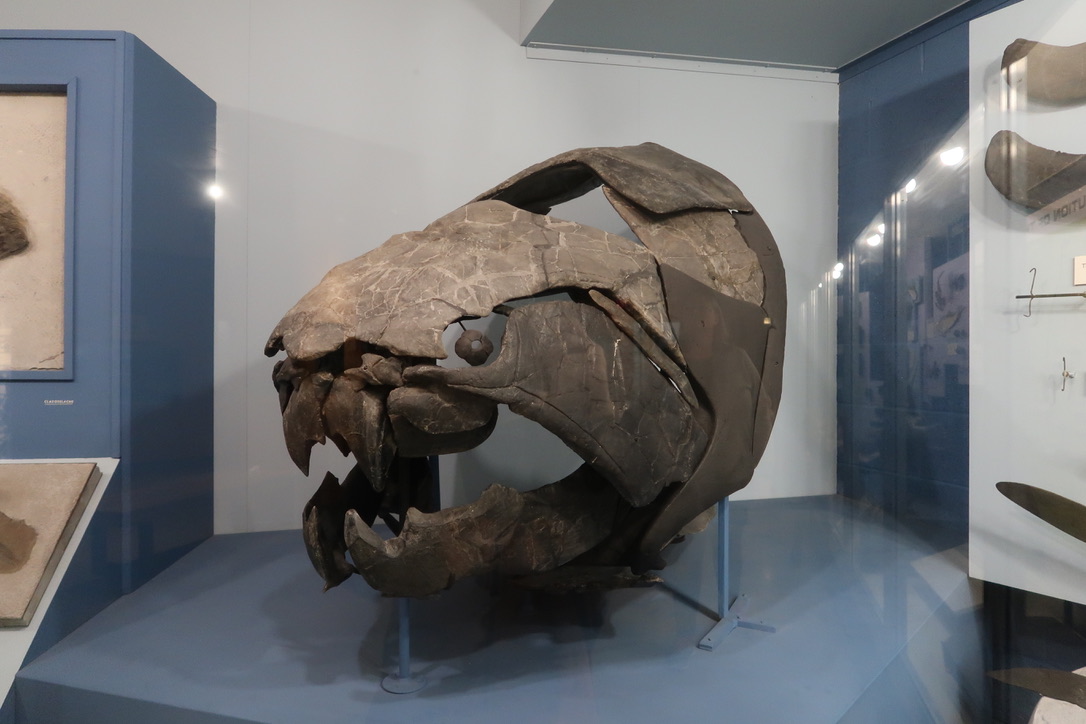

44 Comments
Jennifer Van Haitsma
I’ve never been here, but it looks really interesting! My kids would love checking out all the planes. Thanks for the idea!
Sara W
It’s a great museum for kids!
Faith @ Formommiesbymommy
Such a fun place for the kids and a great excursion for the family!
Sara W
It was a great place to spend the afternoon together.
Kelly Marie
Wow! I have never heard of this museum but we aren’t far and I know my kids would love exploring here. Love all your pictures.
Sara W
You should take your kids sometime – it’s free!
Danyelle
My kids would love this. They love planes!
Sara W
You should take them one day. I bet they’d love it!
Amy
I love seeing history like this, it’s always so interesting – even if the topic isn’t really your thing, there’s always interesting information to wonder at!
Sara W
I totally agree. I always find at least one interesting thing at each museum I visit.
Donna
I want to try out the NASA simulator! My daughter would love climbing around in the planes. Looks like a perfect day trip for families
Sara W
It’s a great place for kids of all ages.
Cindy Mailhot
My grandson would love this place! My son would love it too! And so would my father…they are all airplane and military buffs.
Sara W
You should plan a multigenerational guys trip! That would be so fun.
Pam
We visited this on our way home from a soccer tournament in Dayton a few years ago and I was so impressed! What an amazing facility and so much to see, and it’s FREE!
Sara W
It definitely meets all the criteria for a family visit – fun, entertaining, and free!
Stacey Billingsley
It really is a huge place! We visited a couple of years ago, and my whole family enjoyed it. I wasn’t sure if my daughter would, but I think it’s hard not to be in awe of those huge jets and rockets!
Sara W
It is really neat to get to get up close to them and see how big they really are.
melissa
That looks like an amazing museum!! My family would love it (especially my husband!)! We will add it to our to-do list for Ohio!
Sara W
Hope you get to visit one day!
Lisa Manderino
We love airplane museums. They are so cool. My little one loves going to the one near us!
Sara W
Which one is near you? This was the first one that we’ve been to, but we look forward to visiting others.
Tricia Snow
I love the K9 display! This should be done more often. What a great museum!
Sara W
We read a really good book this summer about a military dog. They are such an important part of the military.
Missy
I would love to spend a day at the National Museum of the United States Air Force. Learning about history and planes.
Sara W
You should do it!
Leeanne
I love that you can go into the cockpits on some of these amazing aircrafts. Having so many from different time periods is super too. I know my kids would love this ‘museum’.
Sara W
The sit-in cockpits were definitely one of the best parts.
Brianna Creef
I have always been fascinated by planes and just seeing these photos alone makes me want to visit! Thanks for sharing!
Sara W
It’s such a great place for anyone, but especially someone who has an interest in planes.
Barbara
This looks like an amazing experience! Thanks for the information for us to consider a visit!
Sara W
If you go, I think you’ll enjoy it!
Chantelle
I love places like this! So fun. You guys had a busy few days but sounds like everyone had a great time.
Sara W
Definitely jam-packed days, but they were enjoyable.
kmf
What a fascinating museum! So fun for kids and adults to learn more about this part of aviation history. My husband served in the Air Force for four years…I’m sure he’d love to check this museum out with me.
Sara W
Oh yes, I bet your husband would love it.
Trisha
Now this place looks like fun! We have an aviation museum near us, AirZoo, and my kids love to visit there. Our presidential museum even had the wounded canine exhibit too! They are beautiful pieces of art!
Sara W
AirZoo sounds like the name of a fun place to visit!
Cindy Moore
My great nephews would love this museum! Both of them want to pilot airplanes.
Sara W
What a great aspiration!
heather J jandrue
Another great science museum!
Sara W
This was a fun one.
Alexandra
I have family members who have served in the US Air Force. I think this would be a great museum to visit with our family!
Sara W
Yes, definitely, it would have a special meaning for your family.